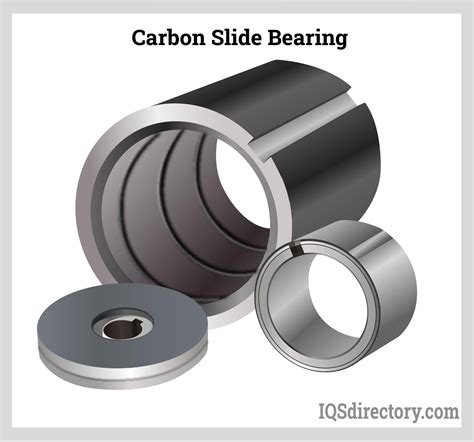Understanding the Functionalities of Slide Bearings: A Comprehensive Guide
Introduction
Slide bearings are crucial mechanical components that facilitate motion between two surfaces. They play a vital role in a wide range of industries, including automotive, aerospace, and manufacturing. By mitigating friction and allowing for smoother movement, slide bearings enhance the performance and lifespan of machinery. This article delves into the functionalities of slide bearings while exploring their benefits, applications, and industry trends.
Functions of Slide Bearings
Slide bearings enable relative motion between two surfaces by creating a thin film of lubricant between them. This hydrodynamic or hydrostatic film separates the surfaces, reducing friction and wear. The primary functions of slide bearings include:
-
Reducing Friction: Slide bearings minimize friction by creating a barrier between moving surfaces.
-
Allowing Motion: They facilitate smooth and controlled movement between components.
-
Supporting Loads: Slide bearings can withstand significant loads and maintain proper alignment of components.
Materials and Types of Slide Bearings
Slide bearings are available in a variety of materials, including:

-
Metals: Bronze, steel, and aluminum
-
Polymers: Polytetrafluoroethylene (PTFE), nylon, and acetal
-
Composites: A combination of materials, such as metal-backed PTFE
The type of slide bearing selected depends on the specific application requirements, including load capacity, speed, and environmental conditions. Common types of slide bearings include:
-
Plain Bearings: Simple, cylindrical bearings with a smooth surface.
-
Hydrodynamic Bearings: Use a wedge-shaped film of lubricant to support loads.
-
Hydrostatic Bearings: Employ an external pump to maintain a constant lubricant film.
-
Aerostatic Bearings: Similar to hydrostatic bearings, but use air instead of lubricant.
Factors Affecting Slide Bearing Performance

Several factors influence the performance of slide bearings:
-
Load Capacity: The maximum load that a bearing can support without excessive wear.
-
Speed: The rotational or linear velocity of the bearing.
-
Lubrication: The type and quantity of lubricant used to reduce friction.
-
Clearance: The space between the bearing and the mating surface.
-
Temperature: Ambient and operating temperatures can affect bearing performance.
Benefits of Slide Bearings
Slide bearings offer numerous benefits for various applications:
-
Low Friction: Reduced friction results in improved efficiency and longer component life.
-
High Load Capacity: Designed to withstand significant loads while maintaining stability.
-
Compact Size: Slide bearings are often compact and space-saving compared to other bearing types.
-
Tolerance to Misalignment: Accommodate misalignment and compensate for shaft deflections.
-
Low Noise and Vibration: Smooth operation reduces noise and vibration levels.
Applications of Slide Bearings
Slide bearings find widespread use in a multitude of applications across various industries:
-
Automotive: Suspension systems, engines, and transmissions
-
Aerospace: Landing gear, flight control systems, and engines
-
Industrial Machinery: Pumps, motors, and compressors
-
Medical Equipment: Imaging devices, surgical instruments, and patient positioning systems
-
Consumer Products: Appliances, power tools, and household items
Industry Trends and Advancements
The slide bearing industry is continuously evolving with advancements in materials, design, and manufacturing techniques. Key trends include:
-
Development of New Materials: Advanced materials with enhanced properties, such as wear resistance and thermal stability.
-
Improved Manufacturing Processes: Precision machining and advanced coatings for increased accuracy and durability.
-
Digitalization and IoT Integration: Sensors and monitoring systems for predictive maintenance and performance optimization.
-
Miniaturization: Increasing demand for compact and lightweight bearings for various applications.
Tips and Tricks for Slide Bearing Maintenance
Proper maintenance is crucial for optimal slide bearing performance and longevity. Here are some tips and tricks:

-
Select the Right Bearing: Ensure that the bearing meets the specific application requirements and operating conditions.
-
Lubricate Regularly: Follow manufacturer's recommendations for the type and frequency of lubrication.
-
Monitor Bearing Temperature: Excessive heat can damage bearings.
-
Check for Wear and Damage: Regularly inspect bearings for any signs of wear or damage.
-
Protect Against Contamination: Prevent foreign particles and contaminants from entering the bearing.
Humorous Slide Bearing Stories
To lighten the mood, let's share a few humorous stories that illustrate the importance and impact of slide bearings:
Story 1:
An engineer working on a new automotive engine design realized that the engine was overheating due to excessive friction. After much troubleshooting, the engineer discovered that the slide bearings were incorrectly lubricated. By correcting the lubrication issue, the engine temperature dropped significantly, and the engineer became a legend for his "grease-saving" discovery.
Story 2:
In an aerospace manufacturing facility, a team of engineers was tasked with developing a new landing gear system for a high-performance aircraft. The team designed a complex slide bearing mechanism to absorb shock loads during landing. However, during testing, the bearing failed due to insufficient load capacity. After a thorough investigation, the engineers realized that they had used the wrong formula to calculate the bearing's load requirements. This incident served as a valuable lesson on the importance of accurate engineering calculations.
Story 3:
At a medical equipment company, a technician was servicing a high-precision imaging device. During disassembly, the technician accidentally dropped a small screw into the slide bearing mechanism. The screw became lodged in the bearing, causing the device to malfunction. The technician spent hours searching for the screw, and the device was eventually repaired, but the incident highlights the importance of care and attention to detail when working with precision machinery.
These humorous stories emphasize why slide bearings matter:
Incorrect lubrication, improper design, and accidental damage can lead to costly failures and delays in various industries. Therefore, it is essential to understand the functions, applications, and maintenance requirements of slide bearings to ensure optimal performance and system reliability.
Call to Action
Slide bearings play a significant role in the smooth operation of countless machines and devices. By understanding their functionalities, benefits, and maintenance guidelines, you can effectively minimize friction, enhance performance, and extend the lifespan of your equipment. Consult with industry experts, conduct thorough research, and adopt best practices to ensure optimal slide bearing operation in your applications.
